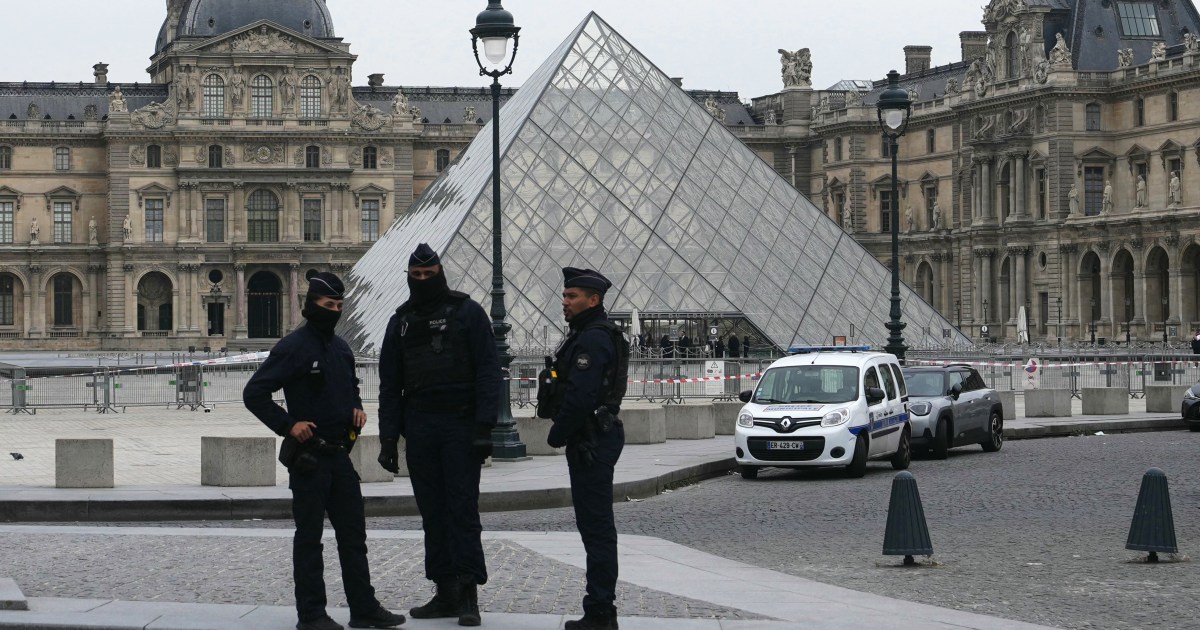French authorities have announced a major development in the Louvre heist investigation, revealing that two former delivery drivers suspected in the robbery have “partially confessed” to their roles. Despite the breakthrough, the high-value jewels taken in the daring daylight theft remain missing, keeping the case very much active and the pressure on investigators.
Paris prosecutor Laure Beccuau shared the update during an October 29 press conference, noting that DNA evidence has linked both men to the crime and that each has admitted to some level of participation. The theft, which occurred on October 19, saw thieves make off with an estimated $102 million worth of jewelry in just seven minutes.
Two Suspects Confess In Part; Two More At Large
According to Beccuau, one suspect—a 34-year-old Algerian national who was unemployed at the time but previously worked as a delivery driver—was detained on the night of October 24 while allegedly attempting to board a one-way flight to Algeria. A second suspect, a 39-year-old taxi driver and former delivery driver, was arrested near his home. Both men have prior criminal records.
Beccuau said the pair “partially” admitted involvement in the heist, and forensic evidence has tied them to the scene. However, authorities are still searching for at least two additional thieves believed to have participated. “There is no evidence the thieves benefited from insider help,” Beccuau stated, emphasizing that while the suspects have acknowledged some responsibility, the broader operation likely involved more participants.
Crucially, the stolen jewels have not been recovered. “The jewels have not yet been returned to our possession,” Beccuau said, adding that she remains optimistic the items will be located and restored “to the Louvre and the French nation.” The statement underscores the cultural weight of the theft: beyond its monetary value, the loss involves pieces of significant heritage tied to one of the world’s most iconic museums.
The investigation continues to move on multiple fronts, from tracking possible accomplices to piecing together how the thieves navigated the museum’s security. The arrests represent a pivotal step, but without the jewels—and with other suspects still at large—the case is far from over.
Security Lapses At The Louvre Under Scrutiny
As news of the arrests broke, French police additionally acknowledged serious vulnerabilities within the Louvre’s security infrastructure. Paris Police Chief Patrice Faure told Senate lawmakers that aging systems and slow implementation of upgrades left the museum exposed, according to NBC News. “A technological step has not been taken,” Faure said, describing parts of the museum’s video network as producing lower-quality images that are slow to relay in real time.
Faure also revealed that the Louvre’s authorization to operate its security cameras expired in July due to a paperwork lapse and was not renewed in time. That bureaucratic oversight, alongside the dated surveillance technology, is now central to understanding how the thieves were able to pull off the theft so quickly and efficiently.
In a detail that further highlights the strain on security, the first alert to police did not come from the museum’s systems, but from a cyclist outside who called the emergency line. By then, the thieves had already completed the heist and exited the building in minutes.
A substantial overhaul is now planned. Faure said a full revamp of the museum’s security is underway, but cautioned it “will not be finished before 2029–2030.” The upgrade is expected to require roughly 60 kilometers of new cabling and cost approximately $93 million. While that timeline may prompt public concern, officials stressed the complexity and scale of modernizing the infrastructure of a centuries-old institution that welcomes millions of visitors annually.
What Comes Next For The Case—and The Museum
With partial confessions secured and DNA evidence in hand, investigators are focused on identifying the remaining suspects and recovering the missing jewels. The absence of insider involvement, as stated by Beccuau, suggests the thieves exploited gaps in surveillance rather than internal knowledge—an angle that may guide both the ongoing probe and the museum’s security reforms.
The Louvre, a global cultural touchstone, now finds itself balancing the immediate demands of a criminal investigation with long-term improvements designed to restore public confidence. The planned security overhaul—spanning new cabling, better video quality, and faster data relay—aims to close the vulnerabilities laid bare by the heist.
Meanwhile, the case remains a high priority for authorities. The seven-minute timeline, the attempted international departure by one suspect, and the scale of the haul indicate a well-coordinated operation. As the search continues for the other alleged thieves and the missing jewels, officials maintain optimism that the artifacts can be found and returned intact.
The arrests mark a significant turn in the investigation, but the story is still unfolding. With cultural heritage and public trust at stake, French authorities are moving to both solve the crime and ensure that the Louvre’s next chapter is defined by restoration and resilience—not vulnerability.















































































































